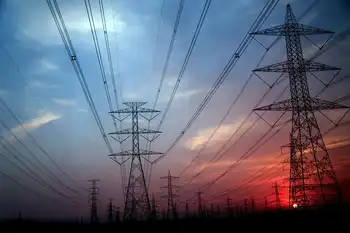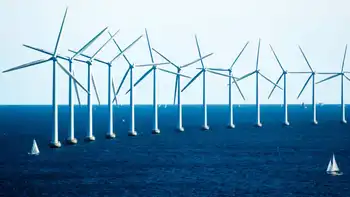Schwarzenegger opens climate summit with Obama
By Associated Press
NFPA 70e Training - Arc Flash
Our customized live online or in‑person group training can be delivered to your staff at your location.

- Live Online
- 6 hours Instructor-led
- Group Training Available
Schwarzenegger, a Republican whose efforts to combat global warming in California have generated worldwide acclaim, wants to show that governments can balance environmental protection and economic growth. He hopes his summit will influence negotiations over a new climate treaty during a U.N. gathering in Poland next month.
In a taped message to attendees, Obama said his administration is committed to a cause that has all but languished at the federal level during the term of President George W. Bush.
"Once I take office, you can be sure that the United States will once again engage vigorously in these negotiations and help lead the world toward a new era of global cooperation on climate change," Obama said.
U.N. negotiators have a December 2009 deadline to complete the next global warming treaty, which would succeed the 1997 Kyoto Protocol. That treaty, which expires in 2012, does not include the U.S. or China — the world's largest emitters.
Negotiators want to cut in half the amount of carbon dioxide discharged into the atmosphere from transportation, industry and power generation by mid-century.
In his roughly four-minute address to Schwarzenegger's conference, Obama said the U.S. economy would continue to weaken if climate change and dependence on foreign oil are not addressed.
He reiterated his support for cutting greenhouse gas emissions using a cap-and-trade system, an approach also favored by Schwarzenegger. Obama said he would establish annual targets to reduce emissions to their 1990 levels by 2020 and reduce them another 80 percent by 2050.
Obama also promoted anew his proposal to invest $15 billion each year to support private-sector efforts toward clean energy. He said tackling climate change can create millions of new jobs as the U.S. invests in technologies to promote solar and wind power, biofuels and cleaner coal-fired plants.
"I promise you this: When I am president, any governor who's willing to promote clean energy will have a partner in the White House," Obama told the participants. "Any company that's willing to invest in clean energy will have an ally in Washington. And any nation that's willing to join the cause of combating climate change will have an ally in the United States of America."
Scientists say the kind of ambitious goals set by Schwarzenegger and Obama must be reached to minimize the consequences of rising global temperatures.
The U.N.'s Intergovernmental Panel on Climate Change has said temperatures worldwide could increase between 4 degrees and 11 degrees Fahrenheit by 2100 unless nations reduce their emissions.
Just how countries will cut emissions remains a topic of intense debate, especially as the world grapples with the worsening financial crisis. U.S. and foreign businesses, as well as some European countries, have questioned whether cutting emissions will be too costly.
Schwarzenegger said states, provinces and countries can cut emissions by forming partnerships, as he has done as governor.
"I still have friends in the business world that come to me and say that this is going to hurt the economy," Schwarzenegger said in his opening remarks. "But of course, we believe very strongly it is going to help the economy."
Schwarzenegger has signed partnerships with governors of seven Western states and four Canadian provinces to develop regional cap-and-trade systems. He also has an agreement with the state of New York to explore linking California's future carbon market with a trading system in the Northeast.
The governor also has signed agreements with the United Kingdom and Australia's premier in Victoria to combat climate change. And Schwarzenegger along with governors from Illinois and Wisconsin signed agreements with government representatives from Brazil and Indonesia to combat tropical deforestation.
Whether countries such as China will sign off on emission mandates remains a point of contention in international negotiations.
China has argued that the U.S. and other industrialized countries should take the lead on cutting greenhouse gas emissions. The nation's top climate bureaucrat reiterated that sentiment in a meeting with reporters.
"Even now, per capita emissions in the U.S. are still five times higher than in China," said Gao Guangsheng, director general of the Department of Climate Change at China's National Development Reform Commission.
He said China's success in reducing emissions in the future will depend on whether the U.S. and other countries share technology and invest in his country.
Schwarzenegger addressed attendees from 19 other countries and 17 states. He announced the conference in September and sent out some 1,400 invitations to regional government representatives, scientists, policy experts and industry representatives.
The two-day summit at the Beverly Hilton Hotel has drawn more than 800 attendees to discuss strategies to cut greenhouse gas emissions.
Republican Gov. Charlie Crist of Florida and Democratic governors Rod Blagojevich of Illinois, Kathleen Sebelius of Kansas and Jim Doyle of Wisconsin are co-hosts.











